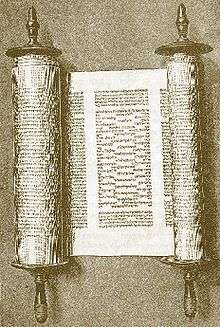Masei

Masei, Mas'ei, or Masse (מַסְעֵי — Hebrew for "journeys,"[1] the second word, and the first distinctive word, in the parashah) is the 43rd weekly Torah portion (פָּרָשָׁה, parashah) in the annual Jewish cycle of Torah reading and the 10th and last in the Book of Numbers. It constitutes Numbers 33:1–36:13. The parashah is made up of 5,773 Hebrew letters, 1,461 Hebrew words, and 132 verses, and can occupy about 189 lines in a Torah Scroll (סֵפֶר תּוֹרָה, Sefer Torah).[2]
Jews generally read it in July or August.[3] The lunisolar Hebrew calendar contains up to 55 Saturdays, the exact number varying between 50 in common years and 54 or 55 in leap years. In some leap years (for example, 2014), parashat Masei is read separately. In most years (for example, 2016, 2017, 2018, 2019, 2020, 2021, 2022, 2023, 2024, 2025, 2026, 2027, and 2028), parashat Masei is combined with the previous parashah, Matot, to help achieve the number of weekly readings needed.[4]
The parashah discusses the stations of the Israelites' journeys, instructions for taking the land of Israel, cities for the Levites and refuge, and the daughters of Zelophehad
Readings
In traditional Sabbath Torah reading, the parashah is divided into seven readings, or עליות, aliyot.[5]

First reading — Numbers 33:1–10
In the first reading (עליה, aliyah), Moses recorded the various journeys of the Israelites from the land of Egypt as directed by God as follows: They journeyed from Rameses to Sukkoth to Etham to Pi-hahiroth to Marah to Elim to the Sea of Reeds.
Second reading — Numbers 33:11–49
In the second reading (עליה, aliyah), the Israelites journeyed from the Sea of Reeds to the wilderness of Sin to Dophkah to Alush to Rephidim to the wilderness of Sinai to Kibroth-hattaavah to Hazeroth to Rithmah to Rimmon-perez to Libnah to Rissah to Kehelath to Mount Shepher Haradah to Makheloth to Tahath to Terah to Mithkah to Hashmonah to Moseroth to Bene-jaakan to Hor-haggidgad to Jotbath to Abronah to Ezion-geber to Kadesh to Mount Hor.[6] At God's command, Aaron ascended Mount Hor and died there, at the age of 123 years.[7] They journeyed from Mount Hor to Zalmonah to Punon to Oboth to Iye-abarim to Dibon-gad to Almon-diblathaim to the hills of Abarim to the steppes of Moab.[8]
Third reading — Numbers 33:50–34:15
In the third reading (עליה, aliyah), in the steppes of Moab, God told Moses to direct the Israelites that when they crossed the Jordan into Canaan, they were to dispossess all the inhabitants of the land, destroy all their figured objects, molten images, and cult places, and take possession of and settle in the land.[9] They were to apportion the land among themselves by lot, clan by clan, with the share varying with the size of the group.[10] But God warned that if the Israelites did not dispossess the inhabitants of the land, those whom they allowed to remain would become stings in their eyes and thorns in their sides, and would harass the Israelites in the land, so that God would do to the Israelites what God had planned to do to the inhabitants of the land.[11] God then told Moses to instruct the Israelites in the boundaries of the land, which included the Dead Sea, the wilderness of Zin, the Wadi of Egypt, the Mediterranean Sea, Mount Hor, the eastern slopes of the Sea of Galilee, and the River Jordan.[12] Moses informed the Israelites that the tribe of Reuben, the tribe of Gad, and the half-tribe of Manasseh had received their portions across the Jordan.[13]
Fourth reading — Numbers 34:16–29
In the fourth reading (עליה, aliyah), God told Moses the names of the men through whom the Israelites were to apportioned the land: Eleazar, Joshua, and a chieftain named from each tribe.[14]
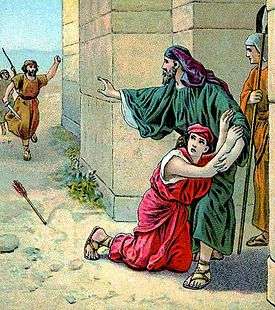
Fifth reading — Numbers 35:1–8
In the fifth reading (עליה, aliyah), God told Moses to instruct the Israelites to assign the Levites out of the other tribes' holdings towns and pasture land for 2,000 cubits outside the town wall in each direction.[15] The Israelites were to assign the Levites 48 towns in all, of which 6 were to be Cities of Refuge to which a manslayer could flee.[16] The Israelites were to take more towns from the larger tribes and fewer from the smaller.[17]
Sixth reading — Numbers 35:9–34
In the sixth reading (עליה, aliyah), three of the six Cities of Refuge were to be designated east of the Jordan, and the other three were to be designated in the land of Canaan.[18] The Cities of Refuge were to serve as places to which a slayer who had killed a person unintentionally could flee from the avenger, so that the slayer might not die without a trial before the assembly.[19] Anyone, however, who struck and killed another with an iron object, stone tool, or wood tool was to be considered a murderer, and was to be put to death.[20] The blood-avenger was to put the murderer to death upon encounter.[21] Similarly, if the killer pushed or struck the victim by hand in hate or hurled something at the victim on purpose and death resulted, the assailant was to be put to death as a murderer.[22] But if the slayer pushed the victim without malice aforethought, hurled an object at the victim unintentionally, or inadvertently dropped on the victim any deadly object of stone, and death resulted — without the victim being an enemy of the slayer and without the slayer seeking the victim harm — then the assembly was to decide between the slayer and the blood-avenger.[23] The assembly was to protect the slayer from the blood-avenger, and the assembly was to restore the slayer to the city of refuge to which the slayer fled, and there the slayer was to remain until the death of the high priest.[24] But if the slayer ever left the city of refuge, and the blood-avenger came upon the slayer outside the city limits, then there would be no bloodguilt if the blood-avenger killed the slayer.[25] The slayer was to remain inside the city of refuge until the death of the high priest, after which the slayer could return to his land.[26] A slayer could be executed only on the evidence of more than one witness.[27] The Israelites were not to accept a ransom for the life of a murderer guilty of a capital crime; the murderer was to be put to death.[28] Similarly, the Israelites were not to accept ransom in lieu of flight to a city of refuge, enabling a slayer to return to live on the slayer's land before the death of the high priest.[29] Bloodshed polluted the land, and only the blood of the one who shed it could make expiation for the bloodshed.[30]
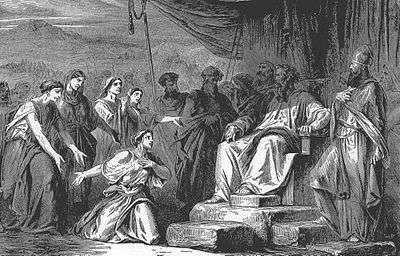
Seventh reading — Numbers 36:1–13
In the seventh reading (עליה, aliyah), kinsmen of Zelophehad, a man of the tribe of Manasseh who had died without a son,[31] appealed to Moses and the chieftains regarding Zelophehad's daughters, to whom God had commanded Moses to assign land.[32] Zelophehad's kinsmen expressed the concern that if Zelophehad's daughters married men from another Israelite tribe, their land would be cut off from Manasseh's ancestral portion and be added to the portion of the husbands' tribe.[33] At God's bidding, Moses instructed the Israelites that the daughters of Zelophehad could marry only men from their father's tribe, so that no inheritance would pass from one tribe to another.[34] And Moses announced the general rule that every daughter who inherited a share was required to marry someone from her father's tribe, in order to preserve each tribe's ancestral share.[35] The daughters of Zelophehad did as God had commanded Moses, and they married cousins, men of the tribe of Manasseh.[36]
Readings according to the triennial cycle
Jews who read the Torah according to the triennial cycle of Torah reading read the parashah according to a different schedule.[37]
In inner-biblical interpretation
The parashah has parallels or is discussed in these Biblical sources:[38]
Numbers chapter 35
The Torah addresses the need for corroborating witnesses three times. Numbers 35:30 instructs that a manslayer may be executed only on the evidence of two or more witnesses. Deuteronomy 17:6 states the same multiple witness requirement for all capital cases. And Deuteronomy 19:15 applies the rule to all criminal offenses.
In early nonrabbinic interpretation
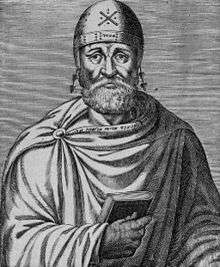
The parashah has parallels or is discussed in these early nonrabbinic sources:[39]
Numbers chapter 35
Philo called the rule of Numbers 35:30 that a judge should not receive the testimony of a single witness "an excellent commandment." Philo argued first that a person might inadvertently gain a false impression of a thing or be careless about observing and therefore be deceived. Secondly, Philo argued it unjust to trust to one witness against many persons, or indeed against only one individual, for why should the judge trust a single witness testifying against another, rather than the defendant pleading on the defendant's own behalf? Where there is no preponderance of opinion for guilt, Philo argued, it is best to suspend judgment.[40]
Similarly, Josephus reported the rule of Numbers 35:30, writing that judges should not credit a single witness, but rather should rely only on three, or two at the least, and only those whose testimony was confirmed by their good lives.[41]
In the Gospel of Matthew, Jesus quoted approvingly the requirement for two witnesses to advise followers how to confront a fellow believer who had sinned against them.[42] Similarly, in his Second Epistle to the Corinthians, Paul quoted approvingly the requirement for two or three witnesses to open a discussion of his forthcoming third visit to Corinth.[43]

In classical rabbinic interpretation
The parashah is discussed in these rabbinic sources from the era of the Mishnah and the Talmud:[44]
Numbers chapter 33
A Midrash taught that God told the Israelites that during all the 40 years that they spent in the wilderness, God did not make it necessary for them to escape. Rather, God cast their enemies down before them. As Deuteronomy 8:15 reports, there were numerous snakes, fiery serpents, and scorpions in the wilderness, but God did not allow them to harm the Israelites. Thus, God told Moses to write down in Numbers 33 the stages by which Israel journeyed in the wilderness, so that they would know the miracles that God had performed for them.[45]
.jpg)
Noting that both Numbers 33:1 and Psalm 77:21 report that the Israelites travelled "under the hand of Moses and Aaron," a Midrash taught that the similarity served to confirm that God led the Israelites in the wilderness (in the words of Psalm 77:21) "like a flock."[46]
A Midrash compared the listing of the Israelites' journeys in Numbers 33 to a king who had a sick son whom he took to a distant place to get cured. On the way back, the king retraced all their previous journeys, noted where his son caught cold and where his son's head ached.[47]
A Midrash used the report of Numbers 33:4 to explain why the Israelites had to leave Egypt to conduct their sacrifices. The Midrash interpreted the words of Exodus 8:22, "Lo, if we sacrifice the abomination of the Egyptians before their eyes, will they not stone us?" to teach that the Egyptians saw the lamb as a god. Thus, when God told Moses to slay the paschal lamb (as reflected in Exodus 12:21), Moses asked God how he could possibly do so, when the lamb was as Egyptian god. God replied that the Israelites would not depart from Egypt until they slaughtered the Egyptian gods before the Egyptians' eyes, so that God might teach them that their gods were really nothing at all. And thus God did so, for on the same night that God slew the Egyptian firstborn, the Israelites slaughtered their paschal lambs and ate them. When the Egyptians saw their firstborn slain and their gods slaughtered, they could do nothing, as Numbers 33:4 reports, "While the Egyptians were burying them whom the Lord had smitten among them, even all their firstborn; upon their gods also the Lord executed judgment."[48]
Reading Numbers 33:4, "Upon their gods also the Lord executed judgments," the Pirke De-Rabbi Eliezer taught that when the Israelites left Egypt, God cast down and broke all the Egyptians' idols.[49]
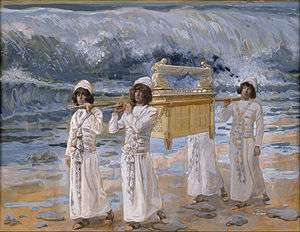
The Gemara taught that while the Israelites were in the Jordan River with the water standing up in a heap (as reported in Joshua 3:14–17), Joshua told them that they were crossing the Jordan on condition that they would disinherit the inhabitants of the land, as Numbers 33:53 says: "Then you shall drive out all the inhabitants of the land from before you." Joshua told them that if they did this, it would be well and good; otherwise, the water would return and drown them.[50]
Interpreting Numbers 26:53, 26:55, and 33:54, the Gemara noted a dispute over whether the land of Israel was apportioned according to those who came out of Egypt or according to those who went into the land of Israel. It was taught in a Baraita that Rabbi Josiah said that the land of Israel was apportioned according to those who came out of Egypt, as Numbers 26:55 says, "according to the names of the tribes of their fathers they shall inherit." The Gemara asked what then to make of Numbers 26:53, which says, "Unto these the land shall be divided for an inheritance." The Gemara proposed that "unto these" meant adults, to the exclusion of minors. But Rabbi Jonathan taught that the land was apportioned according to those who entered the land, for Numbers 26:53 says, "Unto these the land shall be divided for an inheritance." The Gemara posited that according to this view, Numbers 26:55 taught that the manner of inheritance of the land of Israel differed from all other modes of inheritance in the world. For in all other modes of inheritance in the world, the living inherit from the dead, but in this case, the dead inherited from the living. Rabbi Simeon ben Eleazar taught a third view — that the land was divided both according to those who left Egypt and also according to those who entered the land of Israel, so as to carry out both verses. The Gemara explained that according to this view, one among those who came out of Egypt received a share among those who came out of Egypt, and one who entered the land of Israel received a share among those who entered the land. And one who belonged to both categories received a share among both categories.[51]

Numbers chapter 35
Chapter 2 of tractate Makkot in the Mishnah, Tosefta, Jerusalem Talmud, and Babylonian Talmud interpreted the laws of the Cities of Refuge in Exodus 21:12–14, Numbers 35:1–34, Deuteronomy 4:41–43, and 19:1–13.[52]
The Mishnah taught that those who killed in error went into banishment. One would go into banishment if, for example, while one was pushing a roller on a roof, the roller slipped over, fell, and killed someone. One would go into banishment if while one was lowering a cask, it fell down and killed someone. One would go into banishment if while coming down a ladder, one fell and killed someone. But one would not go into banishment if while pulling up the roller it fell back and killed someone, or while raising a bucket the rope snapped and the falling bucket killed someone, or while going up a ladder one fell down and killed someone. The Mishnah's general principle was that whenever the death occurred in the course of a downward movement, the culpable person went into banishment, but if the death did not occur in the course of a downward movement, the person did not go into banishment. If while chopping wood, the iron slipped from the ax handle and killed someone, Rabbi taught that the person did not go into banishment, but the sages said that the person did go into banishment. If from the split log rebounding killed someone, Rabbi said that the person went into banishment, but the sages said that the person did not go into banishment.[53]
Rabbi Jose bar Judah taught that to begin with, they sent a slayer to a city of refuge, whether the slayer killed intentionally or not. Then the court sent and brought the slayer back from the city of refuge. The Court executed whomever the court found guilty of a capital crime, and the court acquitted whomever the court found not guilty of a capital crime. The court restored to the city of refuge whomever the court found liable to banishment, as Numbers 35:25 ordained, "And the congregation shall restore him to the city of refuge from where he had fled."[54] Numbers 35:25 also says, "The manslayer . . . shall dwell therein until the death of the high priest, who was anointed with the holy oil," but the Mishnah taught that the death of a high priest who had been anointed with the holy anointing oil, the death of a high priest who had been consecrated by the many vestments, or the death of a high priest who had retired from his office each equally made possible the return of the slayer. Rabbi Judah said that the death of a priest who had been anointed for war also permitted the return of the slayer. Because of these laws, mothers of high priests would provide food and clothing for the slayers in Cities of Refuge so that the slayers might not pray for the high priest's death.[55] If the high priest died at the conclusion of the slayer's trial, the slayer did not go into banishment. If, however, the high priests died before the trial was concluded and another high priest was appointed in his stead and then the trial concluded, the slayer returned home after the new high priest's death.[56]
A Baraita taught that a disciple in the name of Rabbi Ishmael noted that the words "in all your dwellings" (בְּכֹל מֹשְׁבֹתֵיכֶם, b'chol moshvoteichem) appear both in the phrase, "You shall kindle no fire throughout your habitations upon the Sabbath day," in Exodus 35:3 and in the phrase, "these things shall be for a statute of judgment unto you throughout your generations in all your dwellings," in Numbers 35:29. The Baraita reasoned from this similar usage that just as the law prohibits kindling fire at home, so the law also prohibits kindling fire in the furtherance of criminal justice. And thus, since some executions require kindling a fire, the Baraita taught that the law prohibits executions on the Sabbath.[57]
The Gemara read Numbers 35:30 to limit the participation of witnesses and Rabbinical students in trials. The Mishnah taught that in monetary cases, all may argue for or against the defendant, but in capital cases, all may argue in favor of the defendant, but not against the defendant.[58] The Gemara asked whether the reference to "all" in this Mishnah included even the witnesses. Rabbi Jose son of Rabbi Judah and the Rabbis disagreed to some degree. The Gemara read the words of Numbers 35:30, "But one witness shall not testify against any person," to indicate that a witness cannot participate in a trial — either for acquittal or condemnation — beyond providing testimony. Rabbi Jose son of Rabbi Judah taught that a witness could argue for acquittal, but not for condemnation. Rav Papa taught that the word "all" means to include not the witnesses, but the Rabbinical students who attended trials, and thus was not inconsistent with the views of Rabbi Jose son of Rabbi Judah or of the Rabbis. The Gemara explained the reasoning of Rabbi Jose son of Rabbi Judah for his view that witnesses may argue in favor of the accused as follows: Numbers 35:30 says, "But one witness shall not testify against any person that he die." Hence, according to the reasoning of Rabbi Jose son of Rabbi Judah, only "so that he die" could the witness not argue, but the witness could argue for acquittal. And Resh Lakish explained the reasoning of the Rabbis forbidding a witness to argue in favor of the accused as follows: The Rabbis reasoned that if a witness could argue the case, then the witness might seem personally concerned in his testimony (for a witness contradicted by subsequent witnesses could be subject to execution for testifying falsely). The Gemara then asked how the Rabbis interpreted the words, "so that he die" (which seems to indicate that the witness may not argue only when it leads to death). The Gemara explained that the Rabbis read those words to apply to the Rabbinical students (constraining the students not to argue for condemnation). A Baraita taught that they did not listen to a witnesses who asked to make a statement in the defendant's favor, because Numbers 35:30 says, "But one witness shall not testify." And they did not listen to a Rabbinical student who asked to argue a point to the defendant's disadvantage, because Numbers 35:30 says, "One shall not testify against any person that he die" (but a student could do so for acquittal).[59]
The Gemara cited the Torah's requirement for corroborating witnesses to support the Mishnah's prohibition of circumstantial evidence in capital cases. The Mishnah reported that they admonished witnesses in capital cases not to testify based on conjecture (that is, circumstantial evidence) or hearsay, for the court would scrutinize the witnesses' evidence by cross-examination and inquiry.[60] The Gemara reported that the Rabbis taught that the words "based on conjecture" in the Mishnah meant that the judge told the witness that if the witness saw the defendant running after the victim into a ruin, and the witness pursued the defendant and found the defendant with bloody sword in hand and the victim writhing in agony, then the judge would tell the witness that the witness saw nothing (and did not actually witness a murder). It was taught in a Baraita that Rabbi Simeon ben Shetach said that he once did see a man pursuing his fellow into a ruin, and when Rabbi Simeon ben Shetach ran after the man and saw him, bloody sword in hand and the murdered man writhing, Rabbi Simeon ben Shetach exclaimed to the man, "Wicked man, who slew this man? It is either you or I! But what can I do, since your blood (that is, life) does not rest in my hands, for it is written in the Torah (in Deuteronomy 17:6) ‘At the mouth of two witnesses . . . shall he who is to die be put to death'? May He who knows one's thoughts (that is, God) exact vengeance from him who slew his fellow!" The Gemara reported that before they moved from the place, a serpent bit the murderer and he died.[61]
Rabbi Jose said that a malefactor was never put to death unless two witnesses had duly pre-admonished the malefactor, as Deuteronomy 17:6 prescribes, “At the mouth of two witnesses or three witnesses shall he that is worthy of death be put to death.” And the Mishnah reported another interpretation of the words, “At the mouth of two witnesses,” was that the Sanhedrin would not hear evidence from the mouth of an interpreter.[62]
Rav Zutra bar Tobiah reported that Rav reasoned that Deuteronomy 17:6 disqualified isolated testimony when it prescribes that “at the mouth of one witness he shall not be put to death.” This special admonition against one witness would seem redundant to the earlier context, “At the mouth of two witnesses or three witnesses shall he that is worthy of death be put to death,” so it was taken to mean that individual witnesses who witnesses the crime, one by one, in isolation from each other, were insufficient to convict. Similarly, a Baraita taught that Deuteronomy 17:6 prescribes, “At the mouth of one witness he shall not be put to death,” to cover instances where two persons see the wrongdoer, one from one window and the other from another window, without seeing each other, in which case the evidence could not be joined to form a set of witnesses sufficient to convict. Even if they both witnessed the offence from the same window, one after the other, their testimony could not be joined to form a set of witnesses sufficient to convict.[63]
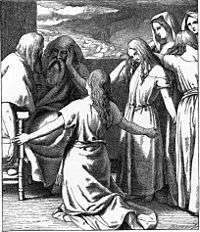
Rabbi Ishmael the son of Rabbi Jose commanded Rabbi Judah the Prince not to engage in a lawsuit against three parties, for one would be an opponent and the other two would be witnesses for the other side.[64]
Numbers chapter 36
Chapter 8 of tractate Bava Batra in the Mishnah and Babylonian Talmud and chapter 7 of tractate Bava Batra in the Tosefta interpreted the laws of inheritance in Numbers 27:1–11 and 36:1–9.[65]
Rava interpreted the words "This is the thing" in Numbers 36:6 to teach that the law prohibiting intermarriage between the tribes held only for the generation of Zelophehad's daughters.[66]
A Baraita taught that Zelophehad's daughters were wise, Torah students, and righteous.[67] And a Baraita taught that Zelophehad's daughters were equal in merit, and that is why the order of their names varies between Numbers 27:1 and 36:11.[68] According to the Gemara, Zelophehad's daughters demonstrated their righteousness in Numbers 36:10–11 by marrying men who were fitting for them.[69]
In modern interpretation
The parashah is discussed in these modern sources:
Numbers chapter 33

Archeologists Israel Finkelstein of Tel Aviv University and Neil Asher Silberman argued that the place Sukkot mentioned in Exodus 12:37 and Numbers 33:5 is probably the Hebrew form of the Egyptian Tjkw, a name referring to a place or an area in the eastern Nile Delta that appears in Egyptian texts from the time of the Nineteenth Dynasty of Egypt, the dynasty of Ramesses II. Finkelstein and Silberman reported that a late thirteenth century BCE Egyptian papyrus recorded that the commanders of the forts along the delta’s eastern border closely monitored the movements of foreigners there, saying: “We have completed the entry of the tribes of the Edomite Shasu (that is, Bedouin) through the fortress of Merneptah-Content-with-Truth, which is in Tjkw, to the pools of Pr-Itm which (are) in Tjkw for the sustenance of their flocks.” And Finkelstein and Silberman reported that the abundant Egyptian sources describing the time of the New Kingdom of Egypt in general and the thirteenth century in particular make no reference to the Israelites. Finkelstein and Silberman also noted that according to the Biblical narrative, the Israelites camped at Kadesh-barnea for 38 of the 40 years of their wanderings. Numbers 34 makes clear Kadesh’s general location from its description of the southern border of the land of Israel, and archaeologists have identified it with the large and well-watered oasis of Ein el-Qudeirat in eastern Sinai, on the border between modern Israel and Egypt. The name Kadesh was probably preserved over the centuries in the name of a nearby smaller spring called Ein Qadis. A small mound with the remains of a Late Iron Age fort stands at the center of this oasis. Yet repeated excavations and surveys throughout the area have not provided even the slightest evidence for activity in the Late Bronze Age, not even a single sherd left by a tiny fleeing band of frightened refugees. Finkelstein and Silberman concluded that based on the evidence at the specific sites where Numbers 33 says that the Israelites camped for extended periods during their wandering in the desert (and where some archaeological indication — if present — would almost certainly be found), a mass Exodus did not happen at the time and in the manner described in the Bible.[70]
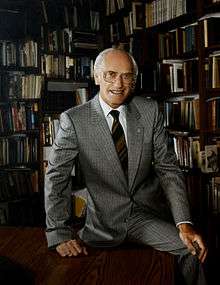
Numbers chapter 35
The 20th century Reform Rabbi Gunther Plaut argued that the discussions of Cities of Refuge in Numbers 35:9–34 and Deuteronomy 4:41–43 and 19:1–13 were composed during a later, settled period, in order to accommodate the disappearance of local altars that previously served as places of refuge.[71] Noting that Numbers 35:25 provided that the person who had committed manslaughter would remain in the city of refuge until the death of the high priest, Plaut argued that only death could compensate for the loss of the victim's life, and thus the death of the High Priest became the symbol of communal expiation.[72]

Explaining the origins of the law that one can see in the Cities of Refuge, Justice Oliver Wendell Holmes Jr. wrote that early forms of legal procedure were grounded in vengeance. Roman law and German law started from the blood feud, which led to the composition, at first optional, then compulsory, by which the feud was bought off. Holmes reported that in Anglo-Saxon practice, the feud was pretty well broken up by the time of William the Conqueror. The killings and house-burnings of an earlier day became the appeals of mayhem and arson, and then the legal actions now familiar to lawyers.[73]
The 19th century American clergyman H. Clay Trumbull argued that the "redeemer" ( גֹּאֵל, goel) in Numbers 35:12 was responsible for securing for the victim's family an equivalent of their loss of blood — the loss of life — by other blood, or by an agreed-upon payment for its value. Trumbull taught that the redeemer's mission was "not vengeance, but equity. He was not an avenger, but a redeemer, a restorer, a balancer."[74]

In an echo of the requirement in Numbers 35:30 that the Israelites could execute a manslayer only with the evidence of two or more witnesses, Article III, Section 3 of the United States Constitution provides that the government may convict a person of treason only with the testimony of two witnesses to the same overt act or a confession in open court. A then-recent precurser of the Constitution's provision appeared in 1776 in the Laws of Virginia, which provided that defendants be "convicted of open deed by the evidence of two sufficient and lawful witnesses, or their own voluntary confession."[75] At the Constitutional Convention, the requirement for two witnesses first appeared in the first draft of the Constitution presented on August 6, 1787. During debate on August 20, 1787, John Dickinson of Delaware questioned what was meant by the "testimony of two witnesses" and whether they were to be witnesses to the same overt act or to different overt acts. The Convention consequently voted to insert the words "to the same overt act" after "two witnesses." Benjamin Franklin supported the amendment, arguing that prosecutions for treason were virulent and perjury too easily made use of against innocent defendants.[76] In the The Federalist Papers, Alexander Hamilton cited the requirement for two witnesses to establish treason as one of several provisions in the Constitution that enumerate rights that, taken together, amounted to a bill of rights.[77]
Commandments

According to Maimonides and Sefer ha-Chinuch, there are 2 positive and 4 negative commandments in the parashah:[78]
- To give the Levites cities to inhabit and their surrounding fields[79]
- Not to kill the murderer before he stands trial[80]
- The court must send the accidental murderer to a city of refuge[81]
- That a witness in a trial for a capital crime should not speak in judgment[82]
- Not to accept monetary restitution to atone for the murderer[83]
- Not to accept monetary restitution instead of being sent to a city of refuge[84]
Haftarah
The haftarah for the parashah is:
- for Ashkenazi Jews: Jeremiah 2:4–28 & 3:4.
- for Sephardi Jews: Jeremiah 2:4–28 & 4:1–2.
When parashah Masei is combined with parashah Matot, the haftarah is the haftarah for parashah Masei.
When the parashah coincides with Shabbat Rosh Chodesh (as it did in 2008), Isaiah 66:1 and 66:23 are added to the haftarah.
Further reading
The parashah has parallels or is discussed in these sources:
Biblical
- Exodus 21:12–14 (place of refuge).
- Numbers 27:1–11 (Zelophehad's daughters).
- Deuteronomy 4:41–43 (Cities of Refuge); 17:6 (two witnesses); 19:1–13 (Cities of Refuge).
- Joshua 17:3–6 (Zelophehad's daughters); 20:1–9 (Cities of Refuge).
Early nonrabbinic
- Philo, Allegorical Interpretation 2:10:35; That the Worse Is Wont To Attack the Better 40:147; On the Unchangableness of God 37:183; On Drunkenness 30:114; On the Confusion of Tongues 13:55; On the Migration of Abraham 25:139; On the Change of Names 37:203; On Dreams, That They Are God-Sent 2:4:30; The Special Laws 1:32:158–61; 4:8:53. Alexandria, Egypt, early 1st Century C.E. Reprinted in, e.g., The Works of Philo: Complete and Unabridged, New Updated Edition. Translated by Charles Duke Yonge, pages 41, 128, 173, 217, 239, 266, 358, 390, 548–49, 621. Peabody, Massachusetts: Hendrickson Publishers, 1993. ISBN 0-943575-93-1.
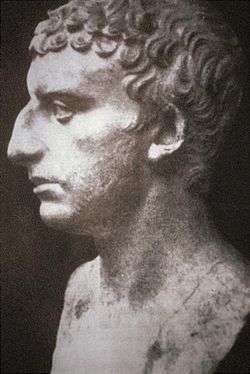
- Matthew 18:15–20. Antioch, circa 80–90 CE. (evidence of two or three witnesses).
- Josephus, Antiquities of the Jews 4:4:3, 7; 4:7:4–5; 4:8:15. Circa 93–94. Reprinted in, e.g., The Works of Josephus: Complete and Unabridged, New Updated Edition. Translated by William Whiston, pages 106–07, 114, 117. Peabody, Massachusetts: Hendrickson Publishers, 1987. ISBN 0-913573-86-8.
Classical rabbinic
- Mishnah: Shekalim 3:2; Sotah 5:3; Kiddushin 3:4; Bava Batra 8:1–8; Sanhedrin 1:6; 4:1, 5; Makkot 2:1–3:10. Land of Israel, circa 200 C.E. Reprinted in, e.g., The Mishnah: A New Translation. Translated by Jacob Neusner, pages 255, 455, 574–76, 585, 589–91, 612–16. New Haven: Yale University Press, 1988. ISBN 0-300-05022-4.
- Tosefta: Terumot 2:12; Challah 2:11; Bikkurim 1:2; Sotah 4:8, 5:13, 8:5; Bava Kamma 8:19; Bava Batra 7:1–18; Sanhedrin 3:7, 4:1; Makkot 2:1–3:10; Bekhorot 6:19; Keritot 4:3. Land of Israel, circa 300 C.E. Reprinted in, e.g., The Tosefta: Translated from the Hebrew, with a New Introduction. Translated by Jacob Neusner, volume 1, pages 141, 340, 345, 854, 869, 848; volume 2, pages 999, 1122–26, 1153, 1155, 1202–08, 1490, 1568. Peabody, Massachusetts: Hendrickson Publishers, 2002. ISBN 1-56563-642-2.
- Sifre on Numbers 35:28. Land of Israel, circa 250–350 C.E.
.jpg)
- Jerusalem Talmud: Sheviit 44a, 47b; Terumot 63a, 72a; Challah 15b, 18a, 44b–45a; Shabbat 55a, 88b; Eruvin 37b; Yoma 2b, 50a; Rosh Hashanah 1b, 17b; Taanit 16b, 30b; Megillah 15b; Sanhedrin 1a, 10b, 23a, 27a–b, 36a; Makkot 1a–. Land of Israel, circa 400 CE. Reprinted in, e.g., Talmud Yerushalmi. Edited by Chaim Malinowitz, Yisroel Simcha Schorr, and Mordechai Marcus, volumes 6b, 8, 11, 14–15, 17, 21, 24–26. Brooklyn: Mesorah Publications, 2006–2014.
- Genesis Rabbah 6:1; 40:6; 48:12; 96 (MSV); 98:5. Land of Israel, 5th century. Reprinted in, e.g., Midrash Rabbah: Genesis. Translated by Harry Freedman and Maurice Simon, volume 1, pages 41, 330–31, 414; volume 2, pages 930, 954. London: Soncino Press, 1939. ISBN 0-900689-38-2.
- Leviticus Rabbah 3:1; 9:9; 10:6; 13:1; 20:7; 36:1. Land of Israel, 5th century. Reprinted in, e.g., Midrash Rabbah: Leviticus. Translated by Harry Freedman and Maurice Simon, volume 4, pages 36, 115, 130, 163–64, 258, 456. London: Soncino Press, 1939. ISBN 0-900689-38-2.
- Babylonian Talmud: Berakhot 4b, 9a; Shabbat 33a; Eruvin 35b, 51a, 55b, 56b–57a; Pesachim 8b, 12a; Yoma 73a, 75b; Rosh Hashanah 2b–3a, 26a; Taanit 30b; Megillah 11a; Moed Katan 5a; Yevamot 6b, 13b; Ketubot 33b, 35a, 37b; Nedarim 81a, 87b; Sotah 27b, 34a, 47b, 48b; Gittin 8a; Kiddushin 42a; Bava Kamma 4a, 26a–b, 28a, 32b, 45a, 83b, 86b–87a, 91a; Bava Metzia 31b; Bava Batra 17a, 24b, 100b, 108a–39b, 159b; Sanhedrin 3b, 10a, 13b, 15b, 18a, 29a, 32a, 33b–34a, 35b, 45b, 49a, 53a, 69a, 72b, 76b, 77b, 84b, 91a; Makkot 2a, 5a–6a, 7a–13a; Shevuot 7b–8a, 33b; Avodah Zarah 9b; Horayot 11b; Zevachim 117a; Bekhorot 55a; Arakhin 33b; Temurah 16a; Keritot 26a. Babylonia, 6th Century. Reprinted in, e.g., Talmud Bavli. Edited by Yisroel Simcha Schorr, Chaim Malinowitz, and Mordechai Marcus, 72 volumes. Brooklyn: Mesorah Pubs., 2006.

Medieval
- Rashi. Commentary. Numbers 33–36. Troyes, France, late 11th Century. Reprinted in, e.g., Rashi. The Torah: With Rashi's Commentary Translated, Annotated, and Elucidated. Translated and annotated by Yisrael Isser Zvi Herczeg, volume 4, pages 403–34. Brooklyn: Mesorah Publications, 1997. ISBN 0-89906-029-3.
- Rashbam. Commentary on the Torah. Troyes, early 12th century. Reprinted in, e.g., Rashbam's Commentary on Leviticus and Numbers: An Annotated Translation. Edited and translated by Martin I. Lockshin, pages 293–98. Providence: Brown Judaic Studies, 2001. ISBN 1-930675-07-0.
- Numbers Rabbah 23:1–14. 12th Century. Reprinted in, e.g., Midrash Rabbah: Numbers. Translated by Judah J. Slotki. London: Soncino Press, 1939. ISBN 0-900689-38-2.
- Abraham ibn Ezra. Commentary on the Torah. Mid-12th century. Reprinted in, e.g., Ibn Ezra's Commentary on the Pentateuch: Numbers (Ba-Midbar). Translated and annotated by H. Norman Strickman and Arthur M. Silver, pages 256–67. New York: Menorah Publishing Company, 1999. ISBN 0-932232-09-4.
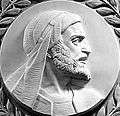
- Maimonides. The Guide for the Perplexed, part 3, chapters 40; 47; 50–51. Cairo, Egypt, 1190. Reprinted in, e.g., Moses Maimonides. The Guide for the Perplexed. Translated by Michael Friedländer, pages 342–43, 369, 382, 390. New York: Dover Publications, 1956. ISBN 0-486-20351-4.
- Hezekiah ben Manoah. Hizkuni. France, circa 1240. Reprinted in, e.g., Chizkiyahu ben Manoach. Chizkuni: Torah Commentary. Translated and annotated by Eliyahu Munk, volume 4, pages 1036–45. Jerusalem: Ktav Publishers, 2013. ISBN 978-1-60280-261-2.
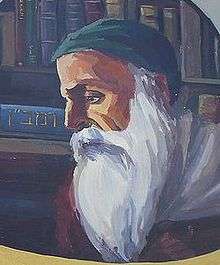
- Nachmanides. Commentary on the Torah. Jerusalem, circa 1270. Reprinted in, e.g., Ramban (Nachmanides): Commentary on the Torah: Numbers. Translated by Charles B. Chavel, volume 4, pages 382–404. New York: Shilo Publishing House, 1975. ISBN 0-88328-009-4.
- Zohar part 1, page 114a; part 2, page 207a. Spain, late 13th Century. Reprinted in, e.g., The Zohar. Translated by Harry Sperling and Maurice Simon. 5 volumes. London: Soncino Press, 1934.
- Jacob ben Asher (Baal Ha-Turim). Rimze Ba'al ha-Turim. Early 14th century. Reprinted in, e.g., Baal Haturim Chumash: Bamidbar/Numbers. Translated by Eliyahu Touger; edited and annotated by Avie Gold, volume 4, pages 1745–75. Brooklyn: Mesorah Publications, 2003. ISBN 1-57819-131-9.
- Jacob ben Asher. Perush Al ha-Torah. Early 14th century. Reprinted in, e.g., Yaakov ben Asher. Tur on the Torah. Translated and annotated by Eliyahu Munk, volume 3, pages 1216–24. Jerusalem: Lambda Publishers, 2005. ISBN 978-9657108765.
- Isaac ben Moses Arama. Akedat Yizhak (The Binding of Isaac). Late 15th century. Reprinted in, e.g., Yitzchak Arama. Akeydat Yitzchak: Commentary of Rabbi Yitzchak Arama on the Torah. Translated and condensed by Eliyahu Munk, volume 2, pages 795–97. New York, Lambda Publishers, 2001. ISBN 965-7108-30-6.
Modern
- Obadiah ben Jacob Sforno. Commentary on the Torah. Venice, 1567. Reprinted in, e.g., Sforno: Commentary on the Torah. Translation and explanatory notes by Raphael Pelcovitz, pages 814–25. Brooklyn: Mesorah Publications, 1997. ISBN 0-89906-268-7.
- Moshe Alshich. Commentary on the Torah. Safed, circa 1593. Reprinted in, e.g., Moshe Alshich. Midrash of Rabbi Moshe Alshich on the Torah. Translated and annotated by Eliyahu Munk, volume 3, pages 940–43. New York, Lambda Publishers, 2000. ISBN 965-7108-13-6.
.jpg)
- Thomas Hobbes. Leviathan, Review & Conclusion. England, 1651. Reprint edited by C. B. Macpherson, page 724. Harmondsworth, England: Penguin Classics, 1982. ISBN 0-14-043195-0.
- Shabbethai Bass. Sifsei Chachamim. Amsterdam, 1680. Reprinted in, e.g., Sefer Bamidbar: From the Five Books of the Torah: Chumash: Targum Okelos: Rashi: Sifsei Chachamim: Yalkut: Haftaros, translated by Avrohom Y. Davis, pages 590–634. Lakewood Township, New Jersey: Metsudah Publications, 2013.
- Chaim ibn Attar. Ohr ha-Chaim. Venice, 1742. Reprinted in Chayim ben Attar. Or Hachayim: Commentary on the Torah. Translated by Eliyahu Munk, volume 4, pages 1740–51. Brooklyn: Lambda Publishers, 1999. ISBN 965-7108-12-8.
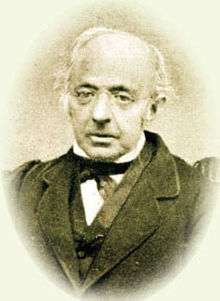
- Samuel David Luzzatto (Shadal). Commentary on the Torah. Padua, 1871. Reprinted in, e.g., Samuel David Luzzatto. Torah Commentary. Translated and annotated by Eliyahu Munk, volume 4, pages 1121–38. New York: Lambda Publishers, 2012. ISBN 978-965-524-067-2.
- Yehudah Aryeh Leib Alter. Sefat Emet. Góra Kalwaria (Ger), Poland, before 1906. Excerpted in The Language of Truth: The Torah Commentary of Sefat Emet. Translated and interpreted by Arthur Green, pages 275–79. Philadelphia: Jewish Publication Society, 1998. ISBN 0-8276-0650-8. Reprinted 2012. ISBN 0-8276-0946-9.
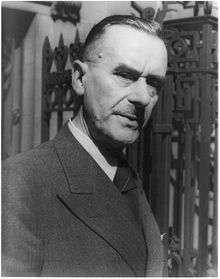
- Thomas Mann. Joseph and His Brothers. Translated by John E. Woods, pages 109, 111, 447. New York: Alfred A. Knopf, 2005. ISBN 1-4000-4001-9. Originally published as Joseph und seine Brüder. Stockholm: Bermann-Fischer Verlag, 1943.
- Bernard F. Batto. "Red Sea or Reed Sea? How the Mistake Was Made and What Yam Sûp Really Means." Biblical Archaeology Review, volume 10, number 4. (July/August 1984).
- Philip J. Budd. Word Biblical Commentary: Volume 5: Numbers, pages 348–90. Waco, Texas: Word Books, 1984. ISBN 0-8499-0204-5.
- Michael Fishbane. Biblical Interpretation in Ancient Israel, pages 98, 104–05, 148, 172, 238, 258, 308, 363, 529. Oxford: Oxford University Press, 1985. ISBN 0-19-826325-2.
- Pinchas H. Peli. Torah Today: A Renewed Encounter with Scripture, pages 195–98. Washington, D.C.: B'nai B'rith Books, 1987. ISBN 0-910250-12-X.
- Jacob Milgrom. The JPS Torah Commentary: Numbers: The Traditional Hebrew Text with the New JPS Translation, pages 277–99, 497–512. Philadelphia: Jewish Publication Society, 1990. ISBN 0-8276-0329-0.
- Mary Douglas. In the Wilderness: The Doctrine of Defilement in the Book of Numbers, pages 86, 103, 108–11, 113, 117, 120, 123, 125–26, 142, 147–48, 151–52, 161, 170, 183, 186, 229, 233, 235, 236–38, 242, 244, 246. Oxford: Oxford University Press, 1993. Reprinted 2004. ISBN 0-19-924541-X.
- Judith S. Antonelli. "Journey to the Land." In In the Image of God: A Feminist Commentary on the Torah, pages 392–97. Northvale, New Jersey: Jason Aronson, 1995. ISBN 1-56821-438-3.
- Ellen Frankel. The Five Books of Miriam: A Woman's Commentary on the Torah, pages 242–43. New York: G. P. Putnam's Sons, 1996. ISBN 0-399-14195-2.
- Jacob Milgrom. "Lex Talionis and the Rabbis: The Talmud reflects an uneasy rabbinic conscience toward the ancient law of talion, ‘eye for eye, tooth for tooth.'" Bible Review, volume 12 (number 2) (April 1996).
- Sorel Goldberg Loeb and Barbara Binder Kadden. Teaching Torah: A Treasury of Insights and Activities, pages 284–89. Denver: A.R.E. Publishing, 1997. ISBN 0-86705-041-1.
- Baruch A. Levine. Numbers 21–36, volume 4A, pages 509–79. New York: Anchor Bible, 2000. ISBN 0-385-41256-8.
- Dennis T. Olson. “Numbers.” In The HarperCollins Bible Commentary. Edited by James L. Mays, pages 186–88. New York: HarperCollins Publishers, revised edition, 2000. ISBN 0-06-065548-8.
- Hara E. Person. "Boundaries and Limits." In The Women's Torah Commentary: New Insights from Women Rabbis on the 54 Weekly Torah Portions. Edited by Elyse Goldstein, pages 321–27. Woodstock, Vermont: Jewish Lights Publishing, 2000. ISBN 1-58023-076-8.
- Israel Finkelstein and Neil Asher Silberman. The Bible Unearthed: Archaeology's New Vision of Ancient Israel and the Origin of Its Sacred Texts, pages 58–63. New York: The Free Press, 2001. ISBN 0-684-86912-8.
- Lainie Blum Cogan and Judy Weiss. Teaching Haftarah: Background, Insights, and Strategies, pages 374–81. Denver: A.R.E. Publishing, 2002. ISBN 0-86705-054-3.
- Tikva Frymer-Kensky. “To the Barricades: Views against the Other.” In Reading the Women of the Bible, pages 199–208. New York: Schocken Books, 2002. ISBN 0-8052-4121-3. (Numbers 33:55–56.).
- Joseph Telushkin. The Ten Commandments of Character: Essential Advice for Living an Honorable, Ethical, Honest Life, pages 275–78. New York: Bell Tower, 2003. ISBN 1-4000-4509-6.
- Robert Alter. The Five Books of Moses: A Translation with Commentary, pages 852–66. New York: W.W. Norton & Co., 2004. ISBN 0-393-01955-1.
- Nili S. Fox. "Numbers." In The Jewish Study Bible. Edited by Adele Berlin and Marc Zvi Brettler, pages 349–55. New York: Oxford University Press, 2004. ISBN 0-19-529751-2.
- Jennifer Elkin Gorman. “Haftarat Ma’asei: Jeremiah 2:4–28; 3:4.” In The Women's Haftarah Commentary: New Insights from Women Rabbis on the 54 Weekly Haftarah Portions, the 5 Megillot & Special Shabbatot. Edited by Elyse Goldstein, pages 206–09. Woodstock, Vermont: Jewish Lights Publishing, 2004. ISBN 1-58023-133-0.
- W. Gunther Plaut. The Torah: A Modern Commentary: Revised Edition. Revised edition edited by David E.S. Stern, pages 1117–38. New York: Union for Reform Judaism, 2006. ISBN 0-8074-0883-2.
- Suzanne A. Brody. "Gag Rule." In Dancing in the White Spaces: The Yearly Torah Cycle and More Poems, page 101. Shelbyville, Kentucky: Wasteland Press, 2007. ISBN 1-60047-112-9.
- Shai Cherry. "The Daughters of Zelophehad." In Torah Through Time: Understanding Bible Commentary, from the Rabbinic Period to Modern Times, pages 161–88. Philadelphia: The Jewish Publication Society, 2007. ISBN 0-8276-0848-9.
- Esther Jungreis. Life Is a Test, page 224. Brooklyn: Shaar Press, 2007. ISBN 1-4226-0609-0.
- James L. Kugel. How To Read the Bible: A Guide to Scripture, Then and Now, page 404. New York: Free Press, 2007. ISBN 0-7432-3586-X.
- The Torah: A Women's Commentary. Edited by Tamara Cohn Eskenazi and Andrea L. Weiss, pages 1013–36. New York: URJ Press, 2008. ISBN 0-8074-1081-0.
- Reuven Hammer. Entering Torah: Prefaces to the Weekly Torah Portion, pages 243–47. New York: Gefen Publishing House, 2009. ISBN 978-965-229-434-0.
- Amber Powers. “Hearing Ancient, Courageous Voices for Justice and Change: Parashat Masei (Numbers 33:1–36:13).” In Torah Queeries: Weekly Commentaries on the Hebrew Bible. Edited by Gregg Drinkwater, Joshua Lesser, and David Shneer; foreword by Judith Plaskow, pages 224–27. New York: New York University Press, 2009. ISBN 0-8147-2012-9.
- Raymond Westbrook and Bruce Wells. "Property and Inheritance." In Everyday Law in Biblical Israel: An Introduction, pages 91–106. Louisville, Kentucky: Westminster John Knox Press, 2009. ISBN 978-0-664-23497-3.
- Terence E. Fretheim. “Numbers.” In The New Oxford Annotated Bible: New Revised Standard Version with the Apocrypha: An Ecumenical Study Bible. Edited by Michael D. Coogan, Marc Z. Brettler, Carol A. Newsom, and Pheme Perkins, pages 239–45. New York: Oxford University Press, Revised 4th Edition 2010. ISBN 0-19-528955-2.

- The Commentators' Bible: Numbers: The JPS Miqra'ot Gedolot. Edited, translated, and annotated by Michael Carasik, pages 238–54. Philadelphia: Jewish Publication Society, 2011. ISBN 978-0-8276-0921-1.
- Calum Carmichael. "Reuben’s Legacy (Numbers 32–36)." In The Book of Numbers: A Critique of Genesis, pages 159–78. New Haven: Yale University Press, 2012. ISBN 978-0-300-17918-7.
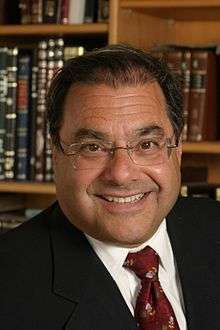
- William G. Dever. The Lives of Ordinary People in Ancient Israel: When Archaeology and the Bible Intersect, page 44. Grand Rapids, Michigan: William B. Eerdmans Publishing Company, 2012. ISBN 978-0-8028-6701-8.
- Shmuel Herzfeld. "Rethinking Our Justice System." In Fifty-Four Pick Up: Fifteen-Minute Inspirational Torah Lessons, pages 246–50. Jerusalem: Gefen Publishing House, 2012. ISBN 978-965-229-558-3.
- Shlomo Riskin. Torah Lights: Bemidbar: Trials and Tribulations in Times of Transition, pages 269–302. New Milford, Connecticut: Maggid Books, 2012. ISBN 978-159-264-275-5.
External links
| Wikibooks has a book on the topic of: The Torah |
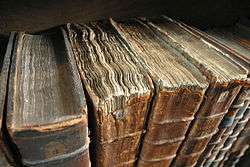
Texts
Commentaries
Notes
- ↑ Also Massey (Orthodox Jewish Bible) or Masa‘ei (Complete Jewish Bible), translated as "stages."
- ↑ "Torah Stats — Bemidbar". Akhlah Inc. Retrieved July 7, 2013.
- ↑ "Parashat Masei". Hebcal. Retrieved July 19, 2016.
- ↑ "Parashat Matot-Masei". Hebcal. Retrieved July 19, 2016.
- ↑ See, e.g., The Schottenstein Edition Interlinear Chumash: Bamidbar/Numbers. Edited by Menachem Davis, pages 227–48. Brooklyn: Mesorah Publications, 2007. ISBN 1-4226-0208-7.
- ↑ Numbers 33:1–37.
- ↑ Numbers 33:38–39.
- ↑ Numbers 33:41–49.
- ↑ Numbers 33:50–53.
- ↑ Numbers 33:54.
- ↑ Numbers 33:55–56.
- ↑ Numbers 34:1–12.
- ↑ Numbers 34:13–15.
- ↑ Numbers 34:16–29.
- ↑ Numbers 35:1–5.
- ↑ Numbers 35:6–7.
- ↑ Numbers 35:8.
- ↑ Numbers 35:14.
- ↑ Numbers 35:9–12.
- ↑ Numbers 35:16–18.
- ↑ Numbers 35:19.
- ↑ Numbers 35:20–21.
- ↑ Numbers 35:22–24.
- ↑ Numbers 35:25.
- ↑ Numbers 35:26–27.
- ↑ Numbers 35:28.
- ↑ Numbers 35:30.
- ↑ Numbers 35:31.
- ↑ Numbers 35:32.
- ↑ Numbers 35:33.
- ↑ See Numbers 27:1–11 and parshat Pinechas.
- ↑ Numbers 36:1–2.
- ↑ Numbers 36:3.
- ↑ Numbers 36:6–7.
- ↑ Numbers 36:8–9.
- ↑ Numbers 36:10–12.
- ↑ See, e.g., Richard Eisenberg “A Complete Triennial Cycle for Reading the Torah.” Proceedings of the Committee on Jewish Law and Standards/1986–1990, pages 383–418. New York: The Rabbinical Assembly. ISBN 0-91-6219-18-6.
- ↑ For more on inner-Biblical interpretation, see, e.g., Benjamin D. Sommer. “Inner-biblical Interpretation.” In The Jewish Study Bible: Second Edition. Edited by Adele Berlin and Marc Zvi Brettler, pages 1835–41. New York: Oxford University Press, 2014. ISBN 978-0195297546
- ↑ For more on early nonrabbinic interpretation, see, e.g., Esther Eshel. “Early Nonrabbinic Interpretation.” In The Jewish Study Bible: Second Edition. Edited by Adele Berlin and Marc Zvi Brettler, pages 1841–59.
- ↑ Philo. The Special Laws 4:8:53. Alexandria, Egypt, early 1st century CE. Reprinted in, e.g., The Works of Philo: Complete and Unabridged, New Updated Edition. Translated by Charles Duke Yonge, page 621. Peabody, Massachusetts: Hendrickson Publishers, 1993. ISBN 0-943575-93-1.
- ↑ Josephus. Antiquities of the Jews 4:8:15. Circa 93–94. Reprinted in, e.g., The Works of Josephus: Complete and Unabridged, New Updated Edition. Translated by William Whiston, 117. Peabody, Massachusetts: Hendrickson Publishers, 1987. ISBN 0-913573-86-8.
- ↑ Matthew 18:16. Reprinted in, e.g., The Jewish Annotated New Testament. Edited by Amy-Jill Levine and Marc Z. Brettler, page 33. New York: Oxford University Press, 2011. ISBN 978-0-19-529770-6.
- ↑ 2 Corinthians 13:1. Reprinted in, e.g., The Jewish Annotated New Testament. Edited by Amy-Jill Levine and Marc Z. Brettler, page 331.
- ↑ For more on classical rabbinic interpretation, see, e.g., Yaakov Elman. “Classical Rabbinic Interpretation.” In The Jewish Study Bible: Second Edition. Edited by Adele Berlin and Marc Zvi Brettler, pages 1859–78.
- ↑ Numbers Rabbah 23:1. 12th century. Reprinted in, e.g., Midrash Rabbah: Numbers. Translated by Judah J. Slotki, volume 6, pages 863–64. London: Soncino Press, 1939. ISBN 0-900689-38-2.
- ↑ Numbers Rabbah 23:2. Reprinted in, e.g., Midrash Rabbah: Numbers. Translated by Judah J. Slotki, volume 6, pages 864–65.
- ↑ Midrash Tanhuma Masei 3. 6th–7th century. Reprinted in, e.g., Metsudah Midrash Tanchuma. Translated and annotated by Avraham Davis; edited by Yaakov Y.H. Pupko, volume 7, pages 328–29. Monsey, New York: Eastern Book Press, 2006. See also Numbers Rabbah 23:3. Reprinted in, e.g., Midrash Rabbah: Numbers. Translated by Judah J. Slotki, volume 6, page 865.
- ↑ Exodus Rabbah 16:3. 10th century. Reprinted in, e.g., Midrash Rabbah: Exodus. Translated by Simon M. Lehrman, volume 3, page 209. London: Soncino Press, 1939. ISBN 0-900689-38-2.
- ↑ Pirke De-Rabbi Eliezer, chapter 48. Early 9th century. Reprinted in, e.g., Pirke de Rabbi Eliezer. Translated and annotated by Gerald Friedlander, pages 381–82. London, 1916. Reprinted New York: Hermon Press, 1970. ISBN 0-87203-183-7.
- ↑ Babylonian Talmud Sotah 34a. Babylonia, 6th century. Reprinted in, e.g., Talmud Bavli. Elucidated by Eliezer Herzka, Moshe Zev Einhorn, Michoel Weiner, Dovid Kamenetsky, and Reuvein Dowek; edited by Yisroel Simcha Schorr and Chaim Malinowitz, volume 33b, pages 34a1–2. Brooklyn: Mesorah Publications, 2000. ISBN 1-57819-673-6.
- ↑ Babylonian Talmud Bava Batra 117a–b. Reprinted in, e.g., Talmud Bavli. Elucidated by Yosef Asher Weiss; edited by Hersh Goldwurm, volume 46, pages 117a1–b1. Brooklyn: Mesorah Publications, 1994. ISBN 1-57819-646-9.
- ↑ Mishnah Makkot 2:1–8. Land of Israel, circa 200 CE. Reprinted in, e.g., The Mishnah: A New Translation. Translated by Jacob Neusner, pages 612–16. New Haven: Yale University Press, 1988. ISBN 0-300-05022-4. Tosefta Makkot 2:1–3:10. Land of Israel, circa 300 CE. Reprinted in, e.g., The Tosefta: Translated from the Hebrew, with a New Introduction. Translated by Jacob Neusner, volume 2, pages 1202–08. Peabody, Massachusetts: Hendrickson Publishers, 2002. ISBN 1-56563-642-2. Jerusalem Talmud Makkot 2:1–7. Land of Israel, circa 400 CE. Reprinted in, e.g., The Jerusalem Talmud: A Translation and Commentary. Edited by Jacob Neusner and translated by Jacob Neusner, Tzvee Zahavy, B. Barry Levy, and Edward Goldman. Peabody, Massachusetts: Hendrickson Publishers, 2009. ISBN 978-1-59856-528-7. Babylonian Talmud Makkot 7a–13a. Reprinted in, e.g., Talmud Bavli. Edited by Yisroel Simcha Schorr and Chaim Malinowitz, volume 50, pages 7a5–13a2. Brooklyn: Mesorah Publications, revised and enlarged edition, 2001. ISBN 1-57819-649-3.
- ↑ Mishnah Makkot 2:1. Reprinted in, e.g., The Mishnah: A New Translation. Translated by Jacob Neusner, pages 612–13. Babylonian Talmud Makkot 7a–b. Reprinted in, e.g., Talmud Bavli. Edited by Yisroel Simcha Schorr and Chaim Malinowitz, volume 50, pages 7a5–b5.
- ↑ Mishnah Makkot 2:6. Reprinted in, e.g., The Mishnah: A New Translation. Translated by Jacob Neusner, pages 614–15. Babylonian Talmud Makkot 9b. Reprinted in, e.g., Talmud Bavli. Edited by Yisroel Simcha Schorr and Chaim Malinowitz, volume 50, page 9b4.
- ↑ Mishnah Makkot 2:6. Reprinted in, e.g., The Mishnah: A New Translation. Translated by Jacob Neusner, pages 614–15. Babylonian Talmud Makkot 11a. Reprinted in, e.g., Talmud Bavli. Edited by Yisroel Simcha Schorr and Chaim Malinowitz, volume 50, pages 11a2–3.
- ↑ Mishnah Makkot 2:6. Reprinted in, e.g., The Mishnah: A New Translation. Translated by Jacob Neusner, pages 614–15. Babylonian Talmud Makkot 11b. Reprinted in, e.g., Talmud Bavli. Edited by Yisroel Simcha Schorr and Chaim Malinowitz, volume 50, page 11b3.
- ↑ Babylonian Talmud Yevamot 6b–7a. Reprinted in, e.g., Talmud Bavli. Elucidated by Eliezer Herzka, Michoel Weiner, and Hillel Danziger; edited by Yisroel Simcha Schorr and Chaim Malinowitz, volume 23, pages 6b2–7a1. Brooklyn: Mesorah Publications, 1999. ISBN 1-57819-668-X.
- ↑ Mishnah Sanhedrin 4:1. Reprinted in, e.g., The Mishnah: A New Translation. Translated by Jacob Neusner, page 589–90. Babylonian Talmud Sanhedrin 32a. Reprinted in, e.g., Talmud Bavli. Elucidated by Asher Dicker and Abba Zvi Naiman; edited by Hersh Goldwurm, volume 47, page 32a1. Brooklyn: Mesorah Publications, 1993. ISBN 1-57819-629-9.
- ↑ Babylonian Talmud Sanhedrin 33b–34a. Reprinted in, e.g., Talmud Bavli. Elucidated by Asher Dicker and Abba Zvi Naiman; edited by Hersh Goldwurm, volume 47, pages 33b3–34a 1.
- ↑ Mishnah Sanhedrin 4:5. Reprinted in, e.g., The Mishnah: A New Translation. Translated by Jacob Neusner, page 591. Babylonian Talmud Sanhedrin 37a. Reprinted in, e.g., Talmud Bavli. Elucidated by Asher Dicker and Abba Zvi Naiman; edited by Hersh Goldwurm, volume 47, page 37a3.
- ↑ Babylonian Talmud Sanhedrin 37b. Reprinted in, e.g., Talmud Bavli. Elucidated by Asher Dicker and Abba Zvi Naiman; edited by Hersh Goldwurm, volume 47, page 37b1. See also Babylonian Talmud Shevuot 34a. Reprinted in, e.g., Talmud Bavli. Elucidated by Michoel Weiner and Mordechai Kuber; edited by Yisroel Simcha Schorr, volume 51, page 34a3. Brooklyn: Mesorah Publications, 1994. ISBN 1-57819-607-8.
- ↑ Mishnah Makkot 1:9. Reprinted in, e.g., The Mishnah: A New Translation. Translated by Jacob Neusner, page 612. Babylonian Talmud Makkot 6b. Reprinted in, e.g., Talmud Bavli. Edited by Yisroel Simcha Schorr and Chaim Malinowitz, volume 50, page 6b1. See also Mekhilta of Rabbi Ishmael Nezikin chapter 4. Land of Israel, late 4th century. Reprinted in, e.g., Mekhilta de-Rabbi Ishmael. Translated by Jacob Z. Lauterbach, volume 2, page 378. Philadelphia: Jewish Publication Society, 1933, reissued 2004. ISBN 0-8276-0678-8. (requiring forewarning by the witnesses). Babylonian Talmud Sanhedrin 9b. Reprinted in, e.g., The Talmud: The Steinsaltz Edition: Tractate Sanhedrin: Part 1. Commentary by Adin Steinsaltz (Even Yisrael), volume 15, page 87. New York: Random House, 1996. ISBN 0-679-45222-2. (Rabbi Jose on warning by two witnesses).
- ↑ Babylonian Talmud Makkot 6b. Reprinted in, e.g., Talmud Bavli. Edited by Yisroel Simcha Schorr and Chaim Malinowitz, volume 50, pages 6b1–2.
- ↑ Babylonian Talmud Pesachim 112b. Reprinted in, e.g., Koren Talmud Bavli: Pesaḥim · Part Two. Commentary by Adin Even-Israel (Steinsaltz), volume 7, page 258. Jerusalem: Koren Publishers, 2013. ISBN 9789653015692.
- ↑ Mishnah Bava Batra 8:1–8. Reprinted in, e.g., The Mishnah: A New Translation. Translated by Jacob Neusner, pages 574–76. Tosefta Bava Batra 7:1–18. Reprinted in, e.g., The Tosefta: Translated from the Hebrew, with a New Introduction. Translated by Jacob Neusner, volume 2, pages 1122–26. Babylonian Talmud Bava Batra 108a–39b. Reprinted in, e.g., Talmud Bavli. Elucidated by Yosef Asher Weiss; edited by Hersh Goldwurm, volume 45, page 108a3–volume 46, page 139b1.
- ↑ Babylonian Talmud Bava Batra 120a. Reprinted in, e.g., Talmud Bavli. Elucidated by Yosef Asher Weiss; edited by Hersh Goldwurm, volume 46, page 120a3. See also Babylonian Talmud Taanit 30b. Reprinted in, e.g., Talmud Bavli. Elucidated by Mordechai Kuber and Michoel Weiner; edited by Hersh Goldwurm, volume 19, page 30b2. Brooklyn: Mesorah Publications, 1991. ISBN 1-57819-619-1.
- ↑ Babylonian Talmud Bava Batra 119b. Reprinted in, e.g., Talmud Bavli. Elucidated by Yosef Asher Weiss; edited by Hersh Goldwurm, volume 46, page 119b2.
- ↑ Babylonian Talmud Bava Batra 120a. Reprinted in, e.g., Talmud Bavli. Elucidated by Yosef Asher Weiss; edited by Hersh Goldwurm, volume 46, page 120a2.
- ↑ Babylonian Talmud Bava Batra 119b. Reprinted in, e.g., Talmud Bavli. Elucidated by Yosef Asher Weiss; edited by Hersh Goldwurm, volume 46, page 119b3.
- ↑ Israel Finkelstein and Neil Asher Silberman. The Bible Unearthed: Archaeology's New Vision of Ancient Israel and the Origin of Its Sacred Texts, pages 58–63. New York: The Free Press, 2001. ISBN 0-684-86912-8.
- ↑ W. Gunther Plaut. The Torah: A Modern Commentary: Revised Edition. Revised edition edited by David E.S. Stern, page 1118. New York: Union for Reform Judaism, 2006. ISBN 0-8074-0883-2.
- ↑ W. Gunther Plaut. The Torah: A Modern Commentary: Revised Edition. Revised edition edited by David E.S. Stern, page 1130.
- ↑ Oliver Wendell Holmes. The Common Law, lecture 1. London: Macmillan & Co., 1881. Reprinted in, e.g., page 5. Blacksburg, Virginia: Wilder Publications, 2009. ISBN 1-60459-767-4.
- ↑ H. Clay Trumbull. The Blood Covenant, page 260. 1885. Reprinted by, e.g., Kessinger Publishing, 2010. ISBN 1169782973. See also George Buchanan Gray. A Critical and Exegetical Commentary on Numbers, pages 480–71. New York: Charles Scribner's Sons, 1903. Reprinted by, e.g., Bloomsbury T&T Clark, 2001. ISBN 0567050025. (quoting Trumbull). W. Gunther Plaut. The Torah: A Modern Commentary: Revised Edition. Revised edition edited by David E.S. Stern, page 1130. (quoting Trumbull).
- ↑ An Act Declaring What Shall Be Treason. Laws of Virginia. 1776. Hening 9:168. Reprinted in, e.g., The Founders' Constitution. Edited Philip B. Kurland and Ralph Lerner, volume 4, page 430. Chicago: University of Chicago Press, 1987. ISBN 0-226-46387-7.
- ↑ James Madison. Notes of Debates in the Federal Convention of 1787. 1840. Reprinted, e.g., edited by Adrienne Koch. Ohio University Press, 1985. ISBN 0821407651.
- ↑ Alexander Hamilton. Federalist No. 84. In The Federalist Papers. Edited by Clinton Rossiter. New York: New American Library, 1961. ISBN 0451612086.
- ↑ Maimonides. Mishneh Torah, Positive Commandments 183, 225; Negative Commandments 291, 292, 295, 296. Cairo, Egypt, 1170–1180. Reprinted in Maimonides. The Commandments: Sefer Ha-Mitzvoth of Maimonides. Translated by Charles B. Chavel, volume 1, pages 196, 239; 2:271–72, 275–76. London: Soncino Press, 1967. ISBN 0-900689-71-4. Sefer HaHinnuch: The Book of [Mitzvah] Education. Translated by Charles Wengrov, volume 4, pages 216–35. Jerusalem: Feldheim Publishers, 1988. ISBN 0-87306-457-7.
- ↑ Numbers 35:2.
- ↑ Numbers 35:12
- ↑ Numbers 35:25.
- ↑ Numbers 35:30.
- ↑ Numbers 35:31.
- ↑ Numbers 35:32.
